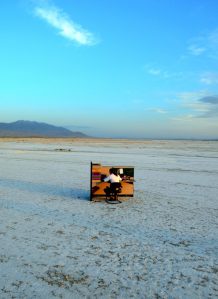In Summer 2007, a season that set records for heat and drought across the continental U.S., a story unfolded in Orem, Utah (NOAA, 2007). On a hot July morning an elderly woman received a knock on her front door. Upon answering, she was confronted by an Orem city police officer. When asked for her name, she refused. She had done nothing wrong – an elderly widow and grandmother, she was dumbstruck as to why an officer would even visit. The officer continued to question her to no avail. After continued resistance to the seemingly unwarranted inquisition by the officer, a scuffle ensued. The feisty 70 year old Betty Perry ended up bruised, battered and sitting in a jail cell. (Sam Penrod, 2007).
What possibly could be the reason for such a traumatic scene in Orem, Utah on a warm summer morning? A clandestine brewing operation? Pot growing? Prostitution ring, fronted by a charming little old lady?
No. None of these.
Grass. Not marijuana, but ordinary lawn grass. Kentucky Bluegrass particularly. Betty Perry had not watered her lawn for over a year and her yard had developed a rather brown and dead look. Neighbors and the community at large could no longer abide the desiccated property and so the law was called to action.
So, let’s break this down to simple terms.
A widow and grandmother, who hasn’t money to afford watering the lawn, is accosted for not keeping her grass alive. Arrested, and injured in the process, she sits in jail until released later in the day to her home. IN UTAH!!!
Utah, for those who may not be aware, is considered high desert. The state ranks as the second driest state in the U.S. 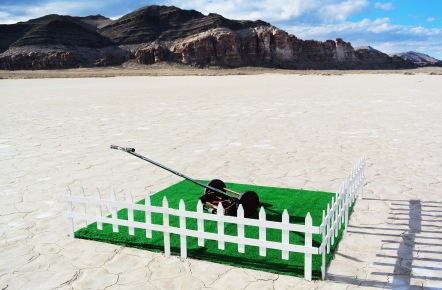 and receives an average of 18 inches of rain, annually (Osborn, 2015; U.S. Climate Data, 2015). Additional precipitation comes in the form of snow. Well established as a dry state, Utah and its residents are no strangers to the word drought. Yet, grass lawns seem to be an essential component of one’s property and their value in the community. So much so, that failure to maintain said grass lawn can culminate in arrest. If this seems ridiculous, it only gets a little more ridiculous.
and receives an average of 18 inches of rain, annually (Osborn, 2015; U.S. Climate Data, 2015). Additional precipitation comes in the form of snow. Well established as a dry state, Utah and its residents are no strangers to the word drought. Yet, grass lawns seem to be an essential component of one’s property and their value in the community. So much so, that failure to maintain said grass lawn can culminate in arrest. If this seems ridiculous, it only gets a little more ridiculous.
According to water quality specialist, Nancy Mesner, at Utah State University, Kentucky Bluegrass (KBG) is the most commonly used landscaping grass in Utah (2006). KBG also happens to use the most water of any lawn grass species.
Are we, as Americans, so blinded by tradition that we fail to see our irrational ways. We are watering and maintaining lawns in the DAMN desert. 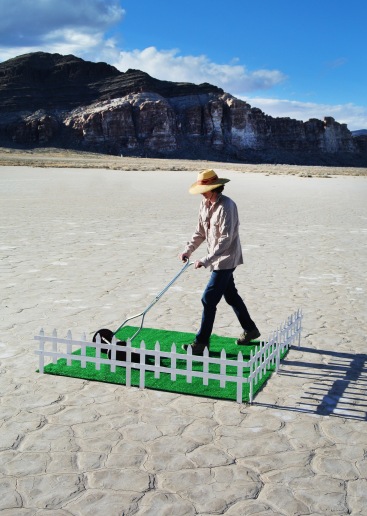 Water thirsty lawns too. As if keeping millions of people hydrated in some of the driest ecosystems on earth isn’t hubris enough for mankind, we also require soft green grass lawns. If we collectively understood and accepted this paradox, I would be less despondent – less skeptical of our cumulative intelligence as a society. But, Las Vegas, Phoenix, Los Angeles, and many other large megalopolises continue to sprawl into the blank slate desert landscapes surrounding their ever-growing limits. In Utah, drought is mentioned as though a plague or curse, rather than a natural component of the local ecosystem.
Water thirsty lawns too. As if keeping millions of people hydrated in some of the driest ecosystems on earth isn’t hubris enough for mankind, we also require soft green grass lawns. If we collectively understood and accepted this paradox, I would be less despondent – less skeptical of our cumulative intelligence as a society. But, Las Vegas, Phoenix, Los Angeles, and many other large megalopolises continue to sprawl into the blank slate desert landscapes surrounding their ever-growing limits. In Utah, drought is mentioned as though a plague or curse, rather than a natural component of the local ecosystem.
“Sure could use some rain”, moans the destitute sod farmer.
“My melon farm is gonna bust if the river keeps drying up”, laments the fruit peddler.
“If we don’t get a good snowpack, the reservoirs won’t fill and I won’t be able to water the plants in the greenhouse come spring,” complains the tropical plant dealer.
The source of our seemingly illogical behavior may lie deeply rooted in our own cultural identity. At what point does a society decide to plant grass, install sprinkler systems, and water the hell out of grass in the middle of the desert.
Lawns seem to have originated in medieval Europe as grassy enclosures used for livestock during the 15th century and the moist climate, characteristic of much of Europe, enabled grasses to flourish and lawns gradually became central to landscaping and yard maintenance.
This tradition followed early American settlers across the Atlantic and as industrialization and mechanization developed, so did the standardization of the American lawn. Early in the 20th century, grass lawns became a recognizable feature in all suburban yards and developers and chemical companies began profiting from the propagation of lawn culture. In the 1930s, the passage of legislation created the 40 hour work week. With all the extra free time, Americans could invest more time in maintaining lawns.
All fine and well. Why shouldn’t we have lawns? They feel nice on our feet. They can look nice. Although, a yard planted with native shrubs and wildflowers is breathtakingly beautiful. The problem is our forced growth of a plant entirely out of its natural climate and region. Although many grasses are native to the western U.S., we have consistently illustrated our affinity for non-native Kentucky Bluegrass and other drought sensitive grass species. Growing up in the Alabama, grass seemed natural. I had never seen a sprinkler system – grass flourished under the natural levels of rainfall bestowed upon the region. When my family moved to Utah, I quickly was introduced to the automatic sprinkler system. Every suburban yard was equipped with an often neglected system – set to water during the hottest times of day, some sprinkler heads even ended up watering a nice patch of pavement. I even worked a couple summers for a landscaping company.
Our tradition followed us out west. Much in the same way it did for early pioneers of the western states. How could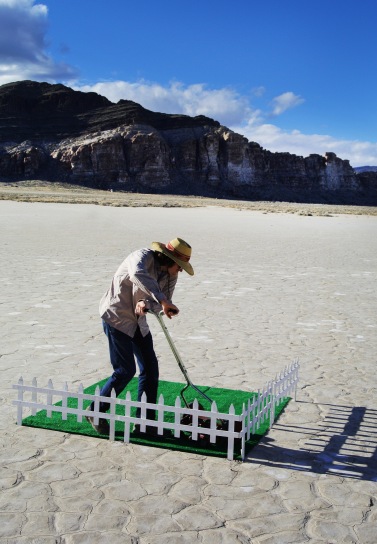 European descendant settlers not continue the behavioral tradition of maintaining grass lawns? How often do we mindlessly water our grass and mow it down, only to repeat again and again on a weekly basis this behavior through the hottest and driest months of the year. And in a desert nonetheless.
European descendant settlers not continue the behavioral tradition of maintaining grass lawns? How often do we mindlessly water our grass and mow it down, only to repeat again and again on a weekly basis this behavior through the hottest and driest months of the year. And in a desert nonetheless.
Water in the west has long been a source of contention and heated debate. Las Vegas pumps water from rivers and aquifers hundreds of miles away in rural Nevada (Brean, 2012). Los Angeles owns most of the land within the Owens River Valley, some 250 miles to the northeast. A fact that many residents of Bishop, California and other towns in Inyo and Mono counties know all too well (Siegler, 2013).
Las Vegas, or what I like to call modern day Sodom and Gomorrah epitomizes this paradox. Much of the water supply for the city’s 2 million citizens and millions more visitors comes from Lake Mead. Water levels in the reservoir have been dropping as a result of ongoing drought and, as of April 2014, “the topmost intake draw lies only 48 feet below the water surface” (Glionna, 2014). Yet, Las Vegas uses more water per capita than most other U.S. cities (Glionna. 2014).
I spent several years in and around southern Nevada conducting research along the Virgin River, one of the sources of water for Lake Mead. I spent countless hours tuned into the local NPR station whilst driving around the desert. Discussions of Lake Mead, drought, and the future of water in Southern Nevada were commonplace. I heard many times of predictions that Lake Mead, within a few decades, could very possibly be nothing more than a vast mud pit.
I understand water consumption from lawns is dwarfed by that of agriculture. Consequently, we cannot turn off the “faucet” on our food production. But, will the traditions of our past continue to dictate our behavior in the face of such absurdity? If the consensus of the majority of climate scientists is correct, the next 100 years will be characterized by increased drought. Access to 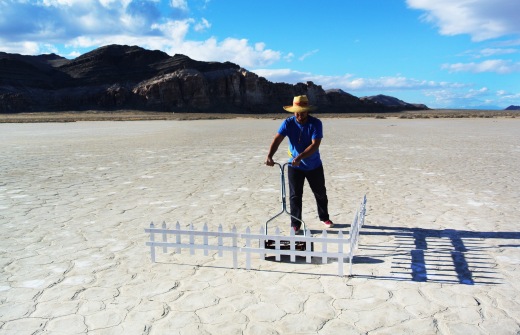 clean water will only become more difficult. No longer may we frivolously water grass when culinary water supplies are short and millions of lives depend on every drop of liquid gold. But, will we continue our behavior nonetheless? Will we continue to mow our yards out of instinct – Even when barren? Or, will our posterity look back on our ways and wonder “What the Hell were they thinking?” I believe the latter will be the case. At the current unsustainable rate that water is used, I believe future generations will regard water not as a commodity but as a valuable resource to be carefully managed and appreciated. Water conscious students of history in the next century may learn of self-defeating water barons – enslaved by their conventions in the face of idiocy.
clean water will only become more difficult. No longer may we frivolously water grass when culinary water supplies are short and millions of lives depend on every drop of liquid gold. But, will we continue our behavior nonetheless? Will we continue to mow our yards out of instinct – Even when barren? Or, will our posterity look back on our ways and wonder “What the Hell were they thinking?” I believe the latter will be the case. At the current unsustainable rate that water is used, I believe future generations will regard water not as a commodity but as a valuable resource to be carefully managed and appreciated. Water conscious students of history in the next century may learn of self-defeating water barons – enslaved by their conventions in the face of idiocy.
References
Brean, Henry. 2012. State Allows Pumping of Groundwater from Rural Nevada. Las Vegas Review- Journal. http://www.reviewjournal.com/news/government/state-allows-pumping-groundwater-rural-nevada Accessed February, 2015.
Glionna, John M. 2014. Drought – and Neighbors – Press Las Vegas to conserve water. LA Times. http://www.latimes.com/nation/la-na-las-vegas-drought-20140421-story.html#page=1 Accessed February, 2015.
Mesner, Nancy. 2006. Frequently Asked Questions. Extension Utah State University. http://extension.usu.edu/htm/faq/faq_q=436 Accessed February, 2015.
Osborn, Liz. 2015. Driest States in America. Current Results: Weather and Science Facts. http://www.currentresults.com/Weather-Extremes/US/driest-states.php Accessed online February, 2015.
Penrod, Sam. 2007. Woman Arrested for Not Watering Lawn. KSL News. http://www.ksl.com/?nid=148&sid=1444771 Accessed online February, 2015.
Siegler, Kirk. 2013. Owens Valley Salty as Los Angeles Water Battle Flows into Court. National Pubic Radio. http://www.npr.org/2013/03/11/173463688/owens-valley-salty-as-los-angeles-water-battle-flows-into-court Accessed online February, 2015.
NOAA Magazine. 2007. http://www.noaanews.noaa.gov/stories2007/s2917.htm Accessed online February, 2015.
U.S. Climate Data. 2015. http://www.usclimatedata.com/climate/utah/united-states/3214 Accessed February, 2015.
